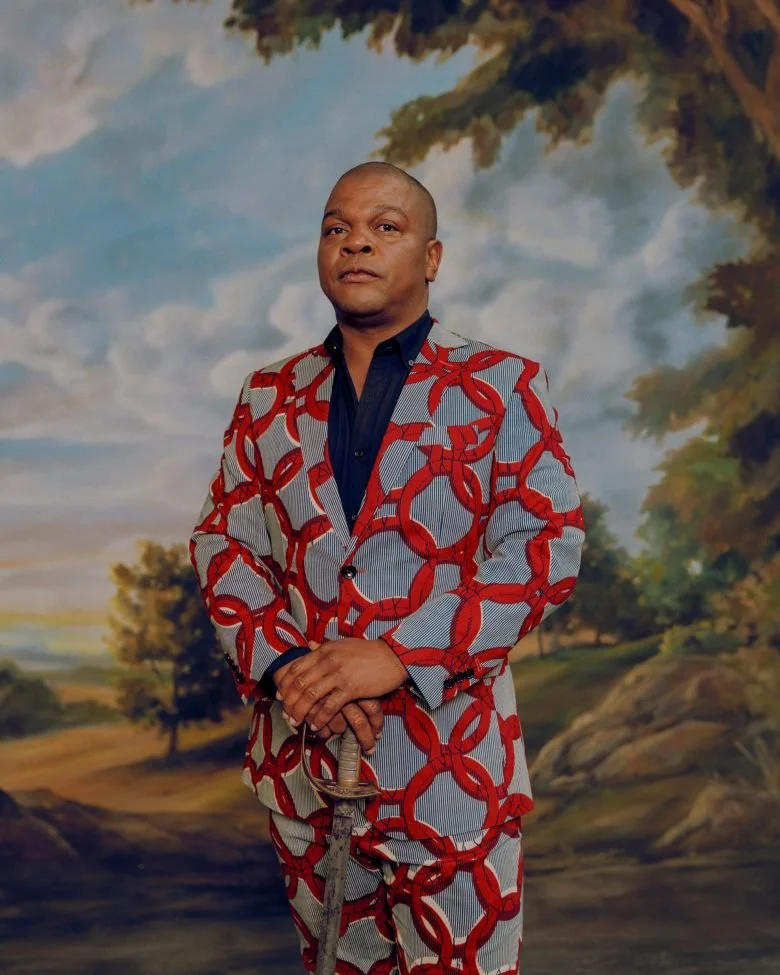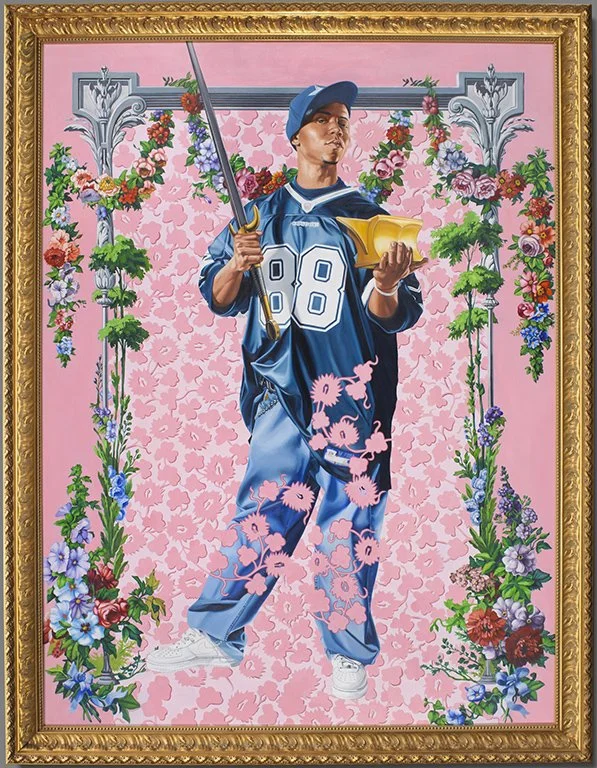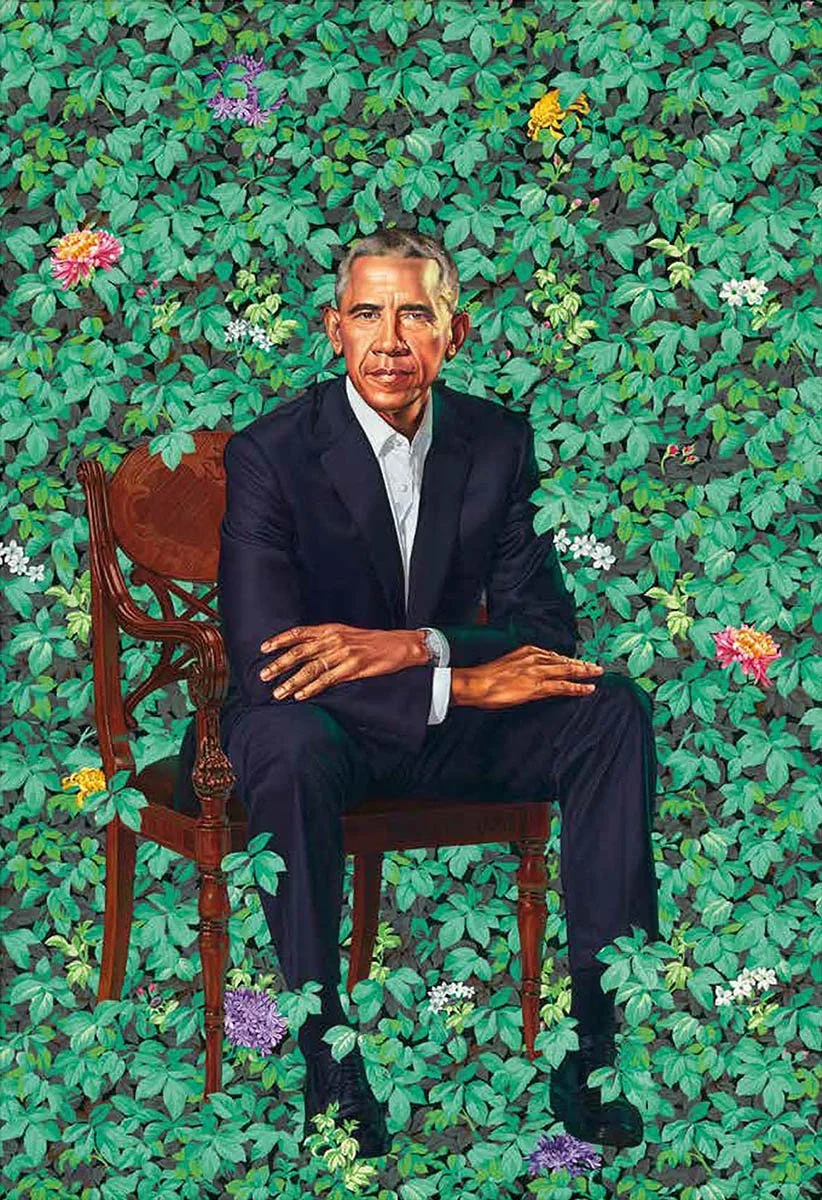Napoleon Leading the Army Over the Alps, 2005.
Kehinde Wiley
Kehinde Wiley is a renowned painter and portraitist. By typically pairing hyper-masculine subjects with colorful French flamboyant or floral backgrounds, Wiley breaks the preconceptions of men of color and offers an empathetic and delicate perspective to masculinity. Kehinde Wiley was born in South Central Los Angeles to an African-American mother and a Nigerian Yoruba father.
The works
Wiley’s realistic, vividly colored paintings of young black males, frequently with dramatic floral backdrops, gained him a reputation for himself. With black masculinity often associated with danger and violence in the United States, his rich and lively portraits contradict viewers’ assumptions about the subjects while also drawing young men and POCs into art institutions where they are grossly overlooked.
Wiley uses art appropriation as a way to critique art's historical norms. He typically draws inspiration from artists such as Diego Velázquez and Peter Paul Rubens. Also influenced by the patterns and body compositions of his West African heritage. One of his more early notable works, Napoleon Leading the Army Over the Alps, is a contemporary version of Jacques-Louis David’s renowned Bonaparte Crossing the Grand Saint-Bernard Pass, 20 May 1800 (1800). By using history mixed with the neoclassicist art movement, Wiley creates a bridge between the past and the present.
Saint Adrian, 2006.
Thiogo Oliveira do Rosario Rozendo from the The World Stage: Brazil series, 2009.
Major Acheivment
Former President Barack Obama chose Wiley to paint his official picture for the Smithsonian's National Portrait Gallery two years later. Obama's figure is against a riotous tapestry of lush greens and flowers representing Kenya, Hawaii, and Chicago. The portrait was the first portrayal of an African American in the presidential portrait collection, as well as the first painting by an African American.
President Barack Obama, 2018.







